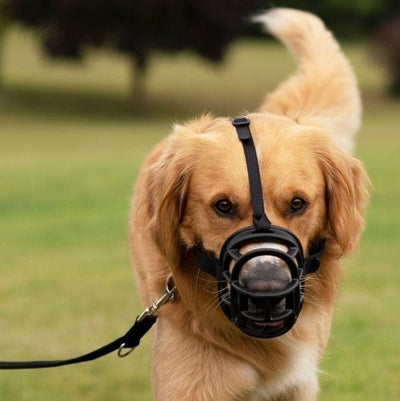
If you are an aquarium owner, you know that maintaining the health of your fish is essential. One crucial aspect of fish health is the levels of ammonia in the water. Ammonia is a toxic compound that can build up in your aquarium, leading to serious health problems for your fish. As a responsible aquarium owner, it is crucial to understand what ammonia is, how it affects your fish, and how to monitor and control ammonia levels in your aquarium. In this article, we will discuss everything you need to know about ammonia levels in your aquarium, from the dangers of high levels to the steps you can take to keep your fish healthy and thriving. So, whether you are an experienced aquarium owner or just starting, read on to learn more about ammonia levels in your aquarium and how to keep your fish happy and healthy.
What causes ammonia levels to rise in an aquarium?
Ammonia levels in your aquarium can rise for various reasons, including overfeeding, overcrowding, and inadequate filtration. When fish food and waste break down, they release ammonia into the water. In a healthy aquarium, beneficial bacteria convert ammonia into nitrite and then into nitrate, which is less harmful to fish. However, when there is an excess of ammonia in the water, the bacteria cannot keep up, leading to a buildup of toxic ammonia.
Overcrowding can also cause ammonia levels to rise. When there are too many fish in the aquarium, there is an excess of waste produced, leading to a buildup of ammonia. Inadequate filtration can also contribute to high ammonia levels, as filters are responsible for removing waste and excess food from the water.
To keep ammonia levels in check, it is crucial to ensure that you are not overfeeding your fish, that your aquarium is not overcrowded, and that your filtration system is adequate for the size of your aquarium.
The dangers of high ammonia levels for fish
High ammonia levels can have severe health consequences for your fish. Ammonia is toxic to fish, and even small amounts can cause damage to their gills and other organs. In the short term, high ammonia levels can cause fish to become stressed, which can lead to a weakened immune system, making them more susceptible to disease. In the long term, high ammonia levels can cause permanent damage to fish, leading to organ failure and death.
Symptoms of high ammonia levels in fish include gasping for air at the water's surface, lethargy, loss of appetite, and red or inflamed gills. If you notice any of these symptoms in your fish, it is crucial to test the ammonia levels in your aquarium immediately and take steps to lower the levels.
Testing ammonia levels in your aquarium
Testing ammonia levels in your aquarium is essential for maintaining the health of your fish. There are several ways to test ammonia levels, including test strips, liquid test kits, and electronic meters. Test strips are the most convenient, but they are also the least accurate. Liquid test kits are more accurate but require more time and effort to use. Electronic meters are the most accurate but are also the most expensive.
To test ammonia levels, simply dip the test strip into the water and compare the color to the chart provided. With a liquid test kit, you add a reagent to a water sample and compare the color to a chart. With an electronic meter, you insert a probe into the water, and the meter displays the ammonia levels.
How to lower ammonia levels in your aquarium
 If you have high ammonia levels in your aquarium, there are several steps you can take to lower them. The first step is to perform a partial water change. Remove 20-30% of the water and replace it with fresh, dechlorinated water. This will dilute the ammonia levels in the water.
If you have high ammonia levels in your aquarium, there are several steps you can take to lower them. The first step is to perform a partial water change. Remove 20-30% of the water and replace it with fresh, dechlorinated water. This will dilute the ammonia levels in the water.
The second step is to remove any excess food and waste from the aquarium. Use a gravel siphon or aquarium vacuum to remove any debris from the substrate and the water column.
The third step is to add beneficial bacteria to the aquarium. Beneficial bacteria convert ammonia into nitrite and then into nitrate, which is less harmful to fish. You can add
which is less harmful to fish. You can add  beneficial bacteria to your aquarium by using a bacterial supplement or by adding filter media from an established aquarium.
beneficial bacteria to your aquarium by using a bacterial supplement or by adding filter media from an established aquarium.
The fourth step is to ensure that your filtration system is working correctly. Clean or replace the filter media, and check that the flow rate is adequate for the size of your aquarium.
Preventing high ammonia levels in your aquarium
Preventing high ammonia levels in your aquarium is crucial for maintaining the health of your fish. Here are some steps you can take to prevent high ammonia levels:
- Do not overfeed your fish. Feed them only what they can eat in a few minutes.
- Do not overcrowd your aquarium. Follow the advice of our knowledgeable staff who can assist you with this and your choice of fish.
- Use an adequate filtration system for the size of your aquarium.
- Perform regular partial water changes to remove excess waste and debris from the water.
- Use a bacterial supplement to maintain a healthy population of beneficial bacteria in your aquarium.
The importance of regular aquarium maintenance
Regular aquarium maintenance is crucial for the health and well-being of your fish. In addition to preventing high ammonia levels, regular maintenance helps to keep the water clean and clear, maintain proper pH levels, and prevent the buildup of harmful bacteria and algae.
Here are some regular maintenance tasks that you should perform:
- Test the water parameters regularly, including ammonia, nitrite, nitrate, pH, and temperature.
- Perform partial water changes every two to four weeks, depending on the size of your aquarium.
- Clean the substrate and decorations to remove excess waste and debris.
- Clean or replace the filter media as needed.
- Check that the equipment, such as heaters and filters, is working correctly.
For more information on water changes, read our blog, Step-by-Step Guide: How to Change the Water in Your Fish Tank
Common mistakes to avoid when managing ammonia levels
Managing ammonia levels in your aquarium can be challenging, and there are several common mistakes that aquarium owners make. Here are some mistakes to avoid when managing ammonia levels:
- Overfeeding your fish: Overfeeding your fish can lead to excess waste and debris in the water, leading to high ammonia levels.
- Adding too many fish at once: Adding too many fish at once can overwhelm the beneficial bacteria in your aquarium, leading to high ammonia levels.
- Neglecting regular water changes: Regular water changes are essential for removing excess waste and debris from the water, which can lead to high ammonia levels.
- Using too much chemical additives: Using too many chemical additives can disrupt the balance of the aquarium, leading to high ammonia levels.
- Not testing the water regularly: Testing the water regularly is essential for maintaining the health of your fish and preventing high ammonia levels.
The best aquarium products for maintaining healthy ammonia levels
 There are several products available that can help you maintain healthy ammonia levels in your aquarium. Here are some of the best products:
There are several products available that can help you maintain healthy ammonia levels in your aquarium. Here are some of the best products:
- Ammonia Test Kit: Your aquarium test kit reading for ammonia should read 0 ppm (parts per million). Any reading above this will require you to figure out the cause & it should be treated with a product such as Ammo lock by API.
- Beneficial bacteria supplements: Beneficial bacteria supplements are an easy way to add beneficial bacteria to your aquarium, helping to convert ammonia into nitrite and  then into nitrate.
then into nitrate.
- Filter media: Using filter media from an established aquarium can introduce beneficial bacteria to your aquarium, helping to maintain healthy ammonia levels.
- Ammonia neutralisers: Ammonia neutralisers can help to neutralise ammonia in the water, making it less harmful to fish.
- Gravel Siphon: An aquarium vacuum is an essential tool for removing excess waste and debris from the  substrate and water column.
substrate and water column.
Maintaining healthy ammonia levels in your aquarium is crucial for the health and well-being of your fish. High ammonia levels can lead to serious health problems for your fish, including organ failure and death. To prevent high ammonia levels, it is essential to ensure that you are not overfeeding your fish, that your aquarium is not overcrowded, and that your filtration system is adequate for the size of your aquarium.
Regular aquarium maintenance, including partial water changes, cleaning the substrate and decorations, and testing the water parameters, is also crucial for maintaining healthy ammonia levels. By following these tips and using the best aquarium products, you can keep your fish happy and healthy for years to come.
© weknowpets 2023





